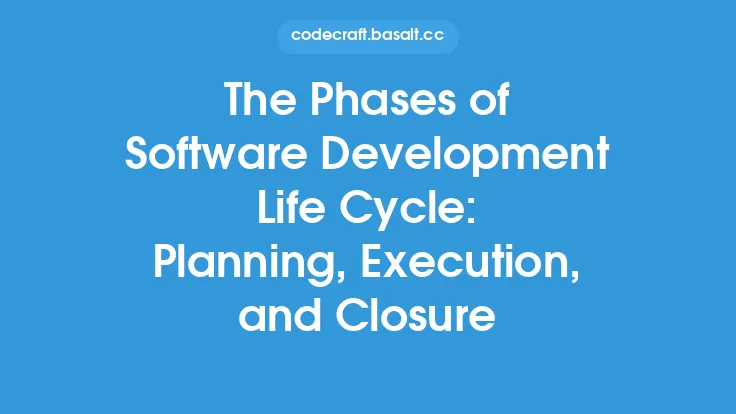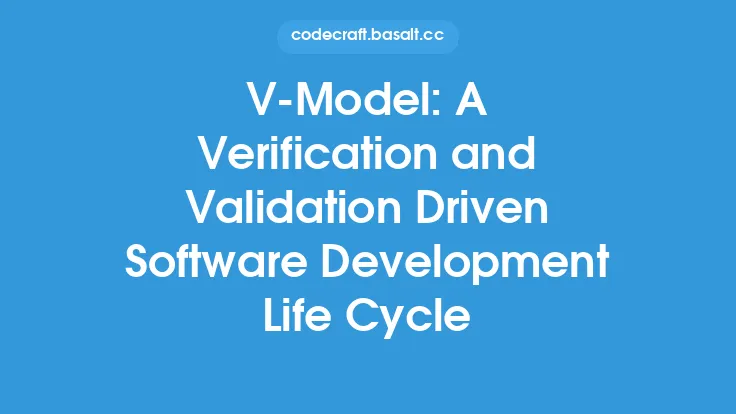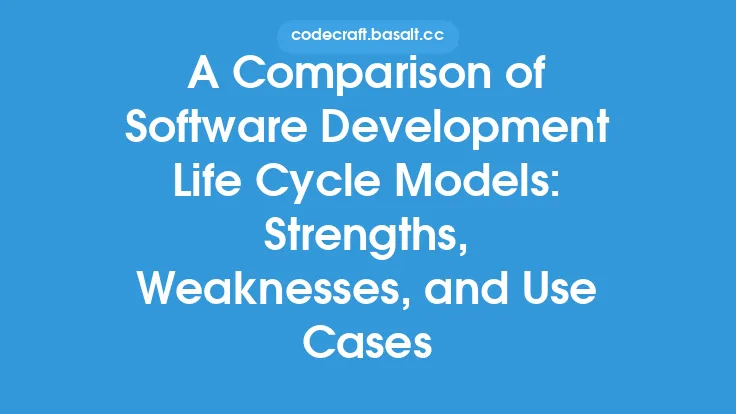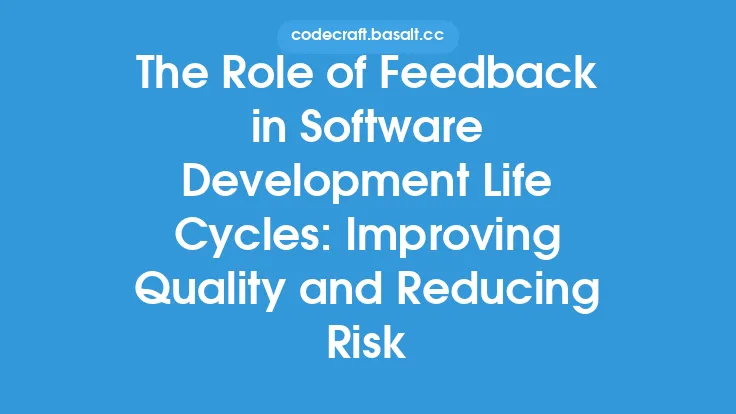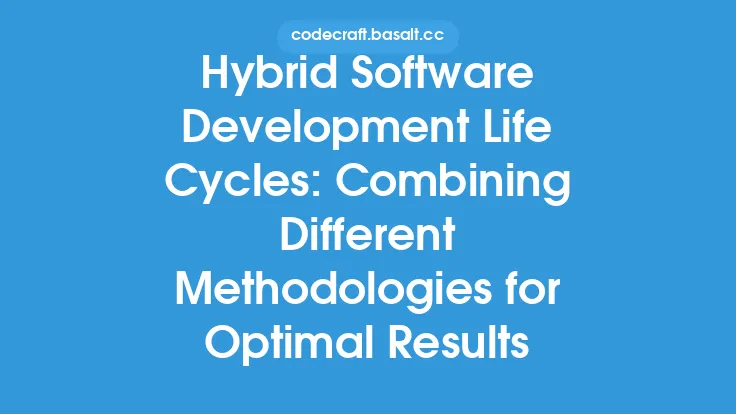The software development life cycle (SDLC) is a framework that outlines the stages and processes involved in developing software applications. It is a critical component of software engineering methodologies, as it ensures that software is developed in a systematic, efficient, and cost-effective manner. In this article, we will delve into the best practices for implementing and continuously improving the SDLC, highlighting the key principles, methodologies, and techniques that can be applied to achieve success in software development projects.
Introduction to SDLC
The SDLC is a structured approach to software development that involves several phases, including planning, analysis, design, implementation, testing, deployment, and maintenance. Each phase has its own set of activities, deliverables, and milestones, which are designed to ensure that the software meets the required quality, functionality, and performance standards. The SDLC provides a roadmap for software development teams to follow, enabling them to manage complexity, mitigate risks, and deliver high-quality software products on time and within budget.
Key Principles of SDLC
There are several key principles that underpin the SDLC, including:
- Customer satisfaction: The SDLC should be focused on delivering software that meets the needs and expectations of customers and stakeholders.
- Continuous improvement: The SDLC should be designed to facilitate continuous improvement, with regular feedback and evaluation mechanisms to identify areas for improvement.
- Risk management: The SDLC should include risk management strategies to identify, assess, and mitigate potential risks and threats.
- Quality assurance: The SDLC should include quality assurance mechanisms to ensure that the software meets the required quality and functionality standards.
- Collaboration and communication: The SDLC should facilitate collaboration and communication among stakeholders, including developers, customers, and end-users.
SDLC Methodologies
There are several SDLC methodologies that can be applied, depending on the specific needs and requirements of the project. Some of the most common SDLC methodologies include:
- Agile: An iterative and incremental approach to software development that emphasizes flexibility, collaboration, and continuous improvement.
- Scrum: A framework for managing and completing complex projects using iterative and incremental practices.
- Kanban: A visual system for managing work, emphasizing continuous flow and limiting work in progress.
- Waterfall: A linear approach to software development that involves a sequential and phased approach to development.
- V-Model: A verification and validation-driven approach to software development that emphasizes testing and validation.
Best Practices for SDLC Implementation
To ensure successful implementation of the SDLC, several best practices can be applied, including:
- Define clear project goals and objectives: Establish a clear understanding of the project's goals, objectives, and deliverables.
- Develop a detailed project plan: Create a comprehensive project plan that outlines the scope, timeline, budget, and resources required.
- Establish a strong project team: Assemble a skilled and experienced project team that includes developers, testers, and other stakeholders.
- Use version control systems: Implement version control systems to manage changes to the codebase and ensure collaboration among team members.
- Conduct regular testing and validation: Perform regular testing and validation to ensure that the software meets the required quality and functionality standards.
Continuous Improvement
Continuous improvement is a critical aspect of the SDLC, as it enables teams to identify areas for improvement and implement changes to optimize the development process. Some strategies for continuous improvement include:
- Regular feedback and evaluation: Solicit feedback from stakeholders and conduct regular evaluations to identify areas for improvement.
- Retrospectives and post-mortem analysis: Conduct retrospectives and post-mortem analysis to identify lessons learned and areas for improvement.
- Process metrics and benchmarking: Establish process metrics and benchmarking to measure the effectiveness of the SDLC and identify areas for improvement.
- Training and professional development: Provide training and professional development opportunities to enhance the skills and knowledge of team members.
Tools and Techniques
Several tools and techniques can be applied to support the SDLC, including:
- Project management tools: Utilize project management tools, such as Asana, Trello, or Jira, to manage and track project progress.
- Version control systems: Implement version control systems, such as Git or SVN, to manage changes to the codebase.
- Testing and validation tools: Use testing and validation tools, such as Selenium or Appium, to automate testing and validation.
- Continuous integration and continuous deployment (CI/CD) tools: Implement CI/CD tools, such as Jenkins or Travis CI, to automate the build, test, and deployment process.
Conclusion
The software development life cycle is a critical component of software engineering methodologies, providing a framework for developing software applications in a systematic, efficient, and cost-effective manner. By applying best practices, methodologies, and techniques, teams can ensure successful implementation of the SDLC and achieve high-quality software products that meet the needs and expectations of customers and stakeholders. Continuous improvement is a critical aspect of the SDLC, enabling teams to identify areas for improvement and implement changes to optimize the development process. By leveraging tools and techniques, such as project management tools, version control systems, and CI/CD tools, teams can streamline the development process and deliver high-quality software products on time and within budget.
